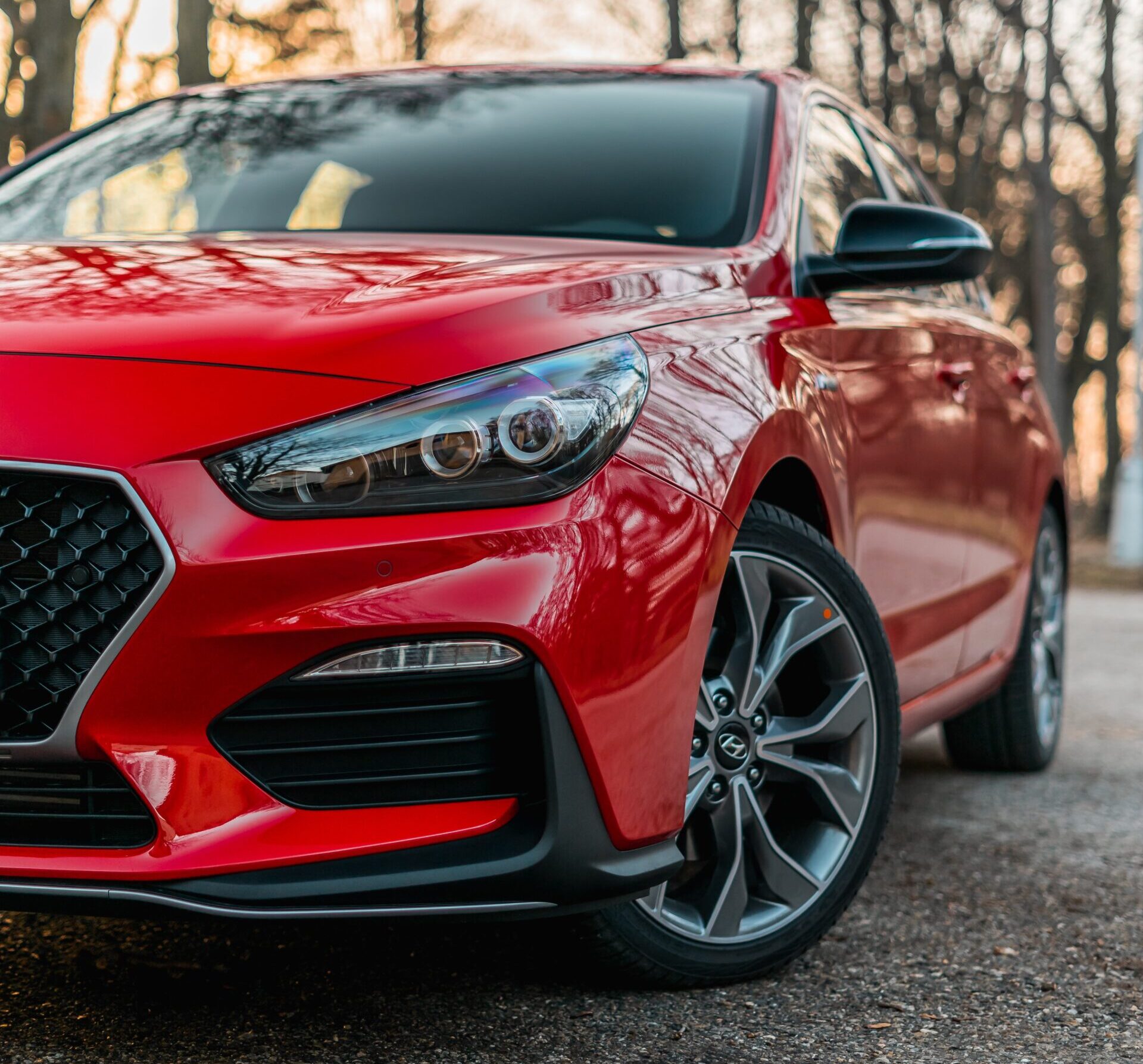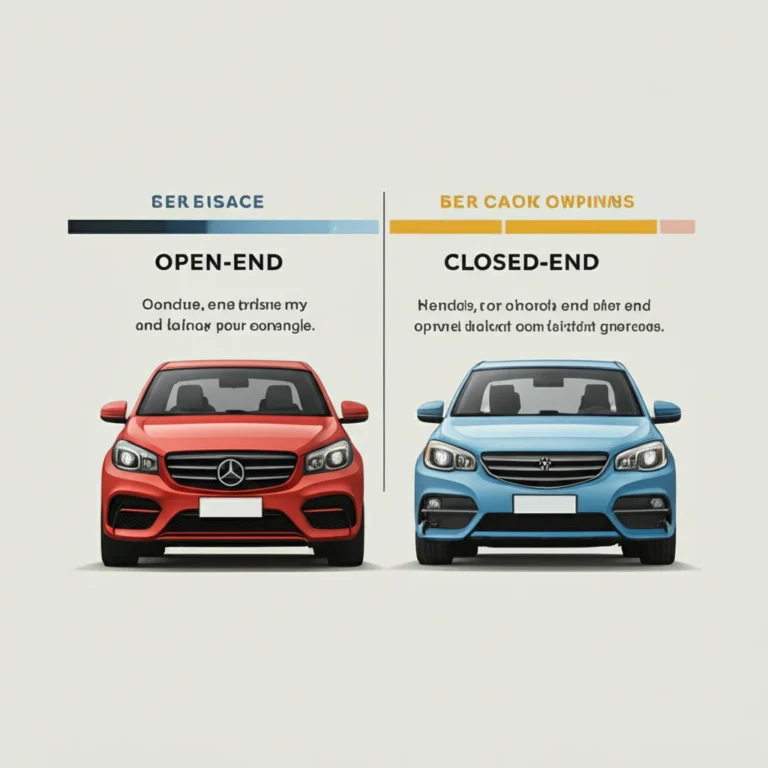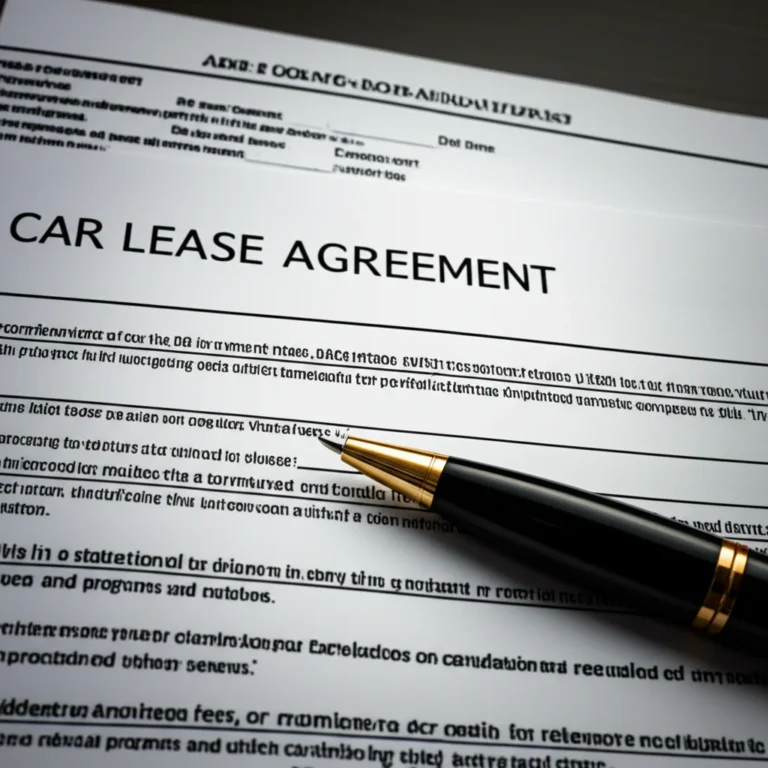Support our educational content for free when you purchase through links on our site. Learn more
How Much Should I Save Before Leasing a Car? 💸 (2025 Guide)
Thinking about leasing a car but wondering exactly how much cash you need stashed away before you can drive off the lot? You’re not alone! Many first-time lessees get blindsided by the upfront costs that dealerships don’t always shout about. Did you know that even so-called “$0 down” leases often require thousands in fees, taxes, and first payments? 😲
In this 2025 guide, we break down every penny you should save before signing your lease—covering down payments, fees, insurance, and hidden costs. Plus, we share insider tips on negotiating like a pro and how your credit score can save (or cost) you big bucks. Ready to stop guessing and start saving smart? Buckle up—your wallet will thank you!
Key Takeaways
- Save beyond the down payment: Cover first month’s payment, acquisition fees, taxes, registration, and possible security deposits.
- Aim for minimal or zero down payment to protect your cash and avoid losing it if the car is totaled.
- Boost your credit score to lower your money factor and reduce upfront costs.
- Don’t forget insurance and maintenance—leasing requires higher coverage and upkeep is on you.
- Plan your savings timeline at least 3-6 months ahead to negotiate the best deals.
Ready to find your perfect lease?
Shop popular models and lease specials here:
Table of Contents
- ⚡️ Quick Tips and Facts About Saving for a Car Lease
- 🚗 Understanding Car Leasing: What You Need to Know Before You Save
- 💰 How Much Should You Save Before Leasing a Car? Breaking Down the Numbers
- 🔍 Hidden Costs and Fees in Car Leasing: What You Should Save For
- 📊 Comparing Leasing vs. Buying: How Your Savings Strategy Changes
- 🛠️ Maintenance and Repairs: Budgeting Beyond the Lease Agreement
- 💡 Tips for Saving Smart Before Signing a Lease
- 📉 How Credit Score Impacts Your Lease Savings and Payments
- 📅 Planning Your Lease Timeline: When to Start Saving
- 📈 How to Negotiate Your Lease to Reduce Upfront Costs
- 🔄 What Happens at Lease-End? Preparing Financially for the Next Step
- 📚 Leasing Lingo Decoded: Common Terms You Should Know
- 🛡️ Insurance Requirements for Leased Cars: Budgeting for Protection
- 📉 Depreciation and Residual Value: How They Affect Your Lease Savings
- 💳 Financing Options for Leasing: Should You Use Savings or Credit?
- 🔗 Recommended Links for Leasing and Saving Smarter
- ❓ Frequently Asked Questions About Saving for a Car Lease
- 📖 Reference Links and Resources
- 🏁 Conclusion: Your Roadmap to Smart Car Lease Savings
Here is the main body of the article, crafted by the expert team at Car Leases™.
So, you’ve got your eye on a shiny new ride. Maybe it’s a sleek Tesla Model 3, a rugged Ford Bronco, or a practical Honda CR-V. The allure of that new car smell is intoxicating, and the idea of a low monthly payment through leasing sounds like a dream. But before you start picturing yourself cruising down the highway, a crucial question pops into your head: How much cash do I actually need to have saved up to make this happen?
Fear not, future lessee! We’re the team at Car Leases™, and we live and breathe this stuff. We’ve seen it all, from the savviest savers to the folks who get blindsided by unexpected fees. We’re here to pull back the curtain and give you the real, unvarnished truth. Forget the confusing jargon and the dealership runaround. Let’s talk turkey—or rather, let’s talk treasure. How big does your treasure chest need to be before you sign on that dotted line?
⚡️ Quick Tips and Facts About Saving for a Car Lease
Pressed for time? Here’s the cheat sheet. We’ll dive deeper into these points, but if you read nothing else, read this:
- “Zero Down” is a Myth 🧙♂️: A “$0 down lease” doesn’t mean you walk away with keys for free. It just means you’re not making a capitalized cost reduction. You’ll still owe other fees at signing.
- The 1% Rule: A good rule of thumb is that a great lease deal should have a monthly payment that is around 1% of the car’s MSRP, with a minimal amount due at signing.
- Save for More Than the Drive-Off: Your savings goal should cover all upfront costs PLUS an emergency fund of at least 2-3 monthly payments. Life happens!
- Upfront Costs Vary Wildly: Expect to need anywhere from a small amount to several thousand dollars to get your lease started. This includes your first payment, taxes, and various fees.
- Credit is King 👑: Your credit score is the single biggest factor in determining your lease terms and how much you’ll need upfront. A great score can even get your security deposit waived.
- Insurance Shock is Real: Leasing companies require higher insurance coverage than state minimums. According to the Insurance Information Institute, your car model heavily influences your premium. Some people, especially those looking for the easiest cars to get in and out of for seniors, might find insurance costs vary significantly based on the vehicle’s safety features.
🚗 Understanding Car Leasing: What You Need to Know Before You Save
Before we talk about how much to save, let’s make sure we’re on the same page about what a lease even is. Think of it like renting a really, really nice apartment instead of buying a house. You get to enjoy all the modern amenities and live in a prime location (the driver’s seat of a new car!) for a set period, typically 24 or 36 months. When your lease is up, you hand back the keys and walk away, or you move into a new, even nicer apartment (your next leased car).
You’re not paying for the whole car. You’re paying for the depreciation—the amount of value the car loses while you’re driving it. As our friends at Bankrate put it, “The lease itself is a contract that allows you to drive a new car for a predetermined amount of time, after which you’ll return it to the leasing company or dealership.”
This is the fundamental principle of Car Lease Basics. You get the best years of the car’s life without the long-term commitment of ownership. But this convenience comes with its own set of financial rules you need to play by.
💰 How Much Should You Save Before Leasing a Car? Breaking Down the Numbers
Alright, let’s get to the main event. The total amount you need to save is what’s called the “amount due at signing” or “drive-off costs.” This isn’t one single number; it’s a cocktail of different payments and fees. Let’s break down the ingredients.
1. Down Payment: How Much Is Enough?
This is the big one everyone asks about. A down payment on a lease is officially called a Capitalized Cost Reduction. It’s an optional, upfront payment that lowers the total amount you’re financing, which in turn lowers your monthly payment.
Sounds great, right? Lower monthly payments! But hold on. Here at Car Leases™, we generally advise against large down payments. Why?
- It’s Gone Forever: If your leased car is stolen or totaled in an accident, your down payment vanishes. Poof! Gone. Even with GAP (Guaranteed Asset Protection) insurance, which covers the difference between the insurance payout and what you owe the lease company, you will not get your down payment back.
- It Hides a Bad Deal: Sometimes, dealerships use a large down payment to advertise an unbelievably low monthly payment. You’re just pre-paying for the car.
Our Recommendation: Put down as little as possible. Ideally, $0 down. If you want to lower your monthly payment, use that “down payment” money to make multiple security deposits (MSDs) instead, if the manufacturer offers them. MSDs are refundable at the end of your lease!
2. First Month’s Payment and Fees: What to Expect
Even with a $0 down payment, you’re not driving off for free. You’ll almost always have to pay for these items at signing:
- First Month’s Payment: You pay your first month before you even start the month.
- Acquisition Fee: A fee charged by the leasing company to set up the lease. Think of it as an administrative fee. It’s often negotiable, but not always.
- Documentation Fee (“Doc Fee”): A fee the dealership charges for processing all the paperwork. These fees can vary dramatically by state and dealership.
- Title, Tags, and Registration: The government wants its cut! You have to pay the DMV fees to get the car legally registered in your name.
3. Security Deposits and Other Upfront Costs
A security deposit is a refundable amount held by the leasing company to cover any potential lease-end charges, like excess wear or mileage.
- ✅ Pro: You get it back at the end of the lease (assuming the car is in good shape).
- ❌ Con: It ties up your cash for the entire lease term.
Many manufacturers, like BMW and Lexus, offer a Multiple Security Deposit (MSD) program. By paying several refundable deposits upfront, you can significantly lower your lease’s interest rate (the “money factor”), saving you hundreds or even thousands over the lease term. If you have the cash and plan to be a responsible lessee, this is one of the smartest moves you can make.
4. Taxes, Registration, and Insurance: Don’t Forget These!
Taxes are as certain as a car needing fuel (or a charge!). How you pay sales tax varies by state. Some states require you to pay tax on the entire upfront cost at signing. Others roll it into your monthly payment. Be sure to check your local laws.
And don’t forget about car insurance! We’ll cover this in more detail later, but you need to have your policy in place before you can drive off the lot.
Here’s a sample breakdown of what your total savings goal might look like:
| Upfront Cost Component | Typical Range | Our Advice |
|---|---|---|
| Down Payment (Cap Cost Reduction) | $0 – $5,000+ | Aim for $0. Don’t risk your cash. |
| First Monthly Payment | Varies by car | Non-negotiable. |
| Acquisition Fee | $595 – $1,095 | Sometimes negotiable. |
| Doc Fee | $85 – $800+ | Varies by state law and dealer. |
| Taxes, Title, & Registration | Varies by state | Non-negotiable. |
| Security Deposit | $0 – One month’s payment | Often waived for top-tier credit. |
| Total Due at Signing | Highly Variable | Save for this amount + an emergency fund! |
🔍 Hidden Costs and Fees in Car Leasing: What You Should Save For
The amount you save isn’t just for getting the car; it’s also for ending the lease gracefully. Think of this as your “lease exit strategy” fund.
- Excess Mileage Fees: Leases come with a mileage cap, usually 10,000, 12,000, or 15,000 miles per year. Go over, and you’ll pay a penalty, typically per mile. Be realistic about your driving habits!
- Excess Wear and Tear: A small door ding is usually fine. A giant scrape, torn upholstery, or bald tires? That’s coming out of your pocket. The lease agreement has a guide (and often a handy ruler tool) to define “excessive.”
- Disposition Fee: This is a fee for returning the car at the end of the lease. It covers the cost of cleaning, inspecting, and selling the vehicle. However, this fee is almost always waived if you lease another car from the same brand. Loyalty has its perks!
- Early Termination Fees: Life is unpredictable. If you need to end your lease early, it can be incredibly expensive. As Bankrate notes, you need to “look over your contract for any potential penalties you could face.” This is why we recommend having an emergency fund.
📊 Comparing Leasing vs. Buying: How Your Savings Strategy Changes
The debate is as old as the automobile itself: lease or buy? Your savings strategy will be completely different for each.
- When Buying: The classic advice is the 20/4/10 rule: a 20% down payment, a loan term of no more than 4 years, and total car costs under 10% of your gross income. The goal is to build equity and pay off the car quickly.
- When Leasing: The 20% down payment rule goes out the window. Your savings goal is smaller and more focused: cover the drive-off costs and have a lease-specific emergency fund.
The financial blogger behind Money with Katie has a strong opinion, stating, “You pay for an asset during its most rapid depreciation phase, then give it back.” It’s a valid, financially conservative viewpoint. Leasing is not an investment; it’s a transportation expense. You’re paying for the luxury and convenience of always having a new, warrantied car. If your goal is the absolute lowest long-term cost of ownership, buying a used Toyota Camry and driving it for a decade is the undisputed champion.
But if you value new technology, safety features, and fixed, lower monthly payments, leasing can be a fantastic choice. It’s all about aligning your financial strategy with your lifestyle. Explore your Auto Financing Options to see what fits best.
🛠️ Maintenance and Repairs: Budgeting Beyond the Lease Agreement
“But I don’t have to pay for repairs on a lease, right?” Yes and no.
- Warranty Coverage ✅: For the entire duration of a typical 36-month lease, the car is under the manufacturer’s bumper-to-bumper warranty. If the transmission fails or the infotainment screen goes blank, you’re covered.
- Routine Maintenance ❌: You are still responsible for routine maintenance as outlined in the owner’s manual. This means oil changes, tire rotations, and brake inspections are on your dime.
Ignoring maintenance can lead to a nasty surprise at lease-end when the inspection reveals you haven’t done an oil change in 20,000 miles. We recommend budgeting a small amount each month specifically for maintenance, just as you would if you owned the car. This is especially true for performance or luxury brands. As the Money with Katie article warns, repairs on German cars can be significantly more expensive than on their Japanese counterparts.
💡 Tips for Saving Smart Before Signing a Lease
Ready to start building your lease fund? Here’s how to do it like a pro.
- Create a Target: Use online lease calculators and look at current offers for the car you want. Add up the likely drive-off fees to get a realistic savings goal.
- Automate It: Set up an automatic transfer from your checking to a dedicated savings account every payday. Out of sight, out of mind.
- Hunt for Deals: Keep an eye on manufacturer websites like Hyundai or Kia. They often have “sign and drive” events or special lease deals with very low upfront costs, especially around holidays or the end of the model year.
- Boost Your Credit: The single best way to save money on a lease is to have an excellent credit score. Pay your bills on time and keep your credit utilization low in the months leading up to your lease application.
- Side Hustle for the Drive-Off: If you’re close to your goal, consider a short-term side hustle. A few weeks of food delivery or freelance work could be all you need to cover the upfront costs without dipping into your primary savings.
📉 How Credit Score Impacts Your Lease Savings and Payments
We can’t say it enough: your credit score is paramount in the world of leasing. It directly influences the money factor, which is the lease equivalent of an interest rate. A higher credit score gets you a lower money factor, which means a lower monthly payment.
According to data from credit bureaus like Experian, lenders view scores in different tiers. Here’s how it generally breaks down for leasing:
| Credit Score Tier | FICO Score Range | Impact on Your Lease |
|---|---|---|
| Excellent (Tier 1) | 750+ | ✅ Lowest money factor, security deposit almost always waived. |
| Good | 700 – 749 | ✅ Good money factor, security deposit may be required. |
| Fair | 650 – 699 | 🤔 Higher money factor, security deposit likely required. |
| Poor | Below 650 | ❌ Very difficult to get approved, may require a large down payment or co-signer. |
A great credit score not only saves you money on the payment but also reduces the cash you need at signing by getting that security deposit waived.
📅 Planning Your Lease Timeline: When to Start Saving
Don’t just wake up one day and decide to lease a car. A little planning goes a long way.
- 6-12 Months Out: Start monitoring your credit. Research the cars you’re interested in and their typical lease programs. Begin saving aggressively.
- 3-6 Months Out: Get a firm idea of your savings target. Start looking at specific dealer inventory and manufacturer incentives.
- 1 Month Out: Get pre-approved for financing (this can give you leverage). Start getting insurance quotes. This is the time to test drive your top choices.
- End of the Month/Year: Dealerships are trying to hit sales quotas. This is often the best time to negotiate and get a great deal.
By planning ahead, you put yourself in the driver’s seat of the negotiation, not the other way around.
📈 How to Negotiate Your Lease to Reduce Upfront Costs
Yes, you can and absolutely should negotiate your lease! Many people think the terms are set in stone, but that’s not true.
- Negotiate the Car’s Price First: This is the most important tip. Before you even mention the word “lease,” negotiate the selling price of the car (the Capitalized Cost) as if you were buying it. Every dollar you knock off the price is a dollar you’re not paying for in your lease. Use sites like TrueCar and Edmunds to see what others are paying.
- Question the Fees: Ask for a full breakdown of the drive-off costs. Question the doc fee and see if the acquisition fee can be marked down.
- 👉 Shop the Offer: Once you have a lease offer from one dealer, take it to another. Make them compete for your business.
- Know the Numbers: Understand the key terms. If you know what the “money factor” and “residual value” are, you’ll be taken much more seriously. This is where knowing the Best Lease Terms comes in handy.
👉 Shop lease deals on:
- Popular Models: TrueCar | Edmunds | AutoTrader
🔄 What Happens at Lease-End? Preparing Financially for the Next Step
Your 36 months of bliss are over. Now what? You have three main options, and you should be financially prepared for each.
- Return the Car and Walk Away: The simplest option. You’ll have a pre-return inspection to assess any excess wear and tear. Be prepared to pay the disposition fee and any other charges you’ve incurred.
- Lease a New Car: This is the most common path. The dealer will be thrilled to get you into a new lease. As a loyalty bonus, they will almost certainly waive the disposition fee on your old car. You’ll need to have your savings ready for the drive-off costs of the new lease.
- Buy Your Leased Car: If you love your car and have stayed under the mileage, you can buy it for the pre-determined residual value stated in your contract. You can pay cash or get a lease buyout loan. This can be a great deal if the car’s market value is higher than its residual value.
📚 Leasing Lingo Decoded: Common Terms You Should Know
Lease contracts can feel like they’re written in another language. Here’s a quick translation guide. Understanding this is crucial, as Bankrate wisely states, “If you have already decided to lease instead of buy, it is important to understand the language in the lease agreement.”
- Capitalized Cost (Cap Cost): The negotiated selling price of the car. This is the number you should negotiate down!
- Cap Cost Reduction: A down payment. It lowers the Cap Cost.
- Residual Value: The car’s predicted wholesale value at the end of the lease, expressed as a percentage of MSRP. This is set by the bank and is not negotiable.
- Money Factor: The interest rate on the lease. It’s expressed as a decimal (e.g., .00125). To convert it to a rough APR, multiply by 2400. (0.00125 x 2400 = 3% APR).
- Acquisition Fee: The bank’s fee for setting up the lease.
- Disposition Fee: The bank’s fee for taking the car back at the end of the lease.
🛡️ Insurance Requirements for Leased Cars: Budgeting for Protection
This is a budget bomb that many first-time lessees miss. Because the leasing company technically owns the car, they require you to carry more insurance than your state’s legal minimum.
Typically, you’ll be required to have:
- Bodily Injury Liability: Often $100,000 per person / $300,000 per accident.
- Property Damage Liability: Often $50,000.
- Comprehensive and Collision Coverage: With a deductible of usually no more than $1,000.
This is significantly higher than many state minimums. Before you sign a lease, call your insurance agent and get a quote for the exact car you plan to lease. The difference in your premium could be substantial and must be factored into your monthly budget.
📉 Depreciation and Residual Value: How They Affect Your Lease Savings
Here’s the secret sauce of leasing: Your monthly payment is mostly based on the gap between the Capitalized Cost and the Residual Value.
- Car A (Poor Residual): $40,000 Cap Cost, 50% Residual ($20,000) = You pay for $20,000 of depreciation.
- Car B (Great Residual): $40,000 Cap Cost, 60% Residual ($24,000) = You pay for only $16,000 of depreciation.
Car B will have a much lower monthly payment, even though it costs the same! This is why brands known for holding their value, like Subaru and Honda, often have fantastic lease deals. The financial critic’s view that you “pay for an asset during its most rapid depreciation phase” is true, but by choosing a car with a high residual value, you can minimize the impact of that depreciation on your wallet. This is also a key factor in Electric Vehicle Leases, where government incentives can sometimes be applied to lower the cap cost, resulting in surprisingly affordable payments.
💳 Financing Options for Leasing: Should You Use Savings or Credit?
You’re at the dealership, and they’ve calculated your drive-off cost. You have two ways to pay it:
- Pay with Savings (✅ Recommended): You write a check or use your debit card for the amount due at signing. This is the cleanest, most financially sound way to start a lease.
- Roll it into the Lease (❌ Use with Caution): The dealer says, “Or, we can roll these fees into your monthly payment for a true sign-and-drive deal!” This sounds tempting, but it’s a trap. They are adding the drive-off costs to your total financed amount (the Cap Cost). This means your monthly payment will be higher, and you’ll be paying interest (via the money factor) on your own taxes and fees! Avoid this unless absolutely necessary.
🏁 Conclusion: Your Roadmap to Smart Car Lease Savings
Leasing a car can be a fantastic way to drive a new vehicle every few years with lower monthly payments and less hassle over long-term maintenance. But before you get behind the wheel, knowing how much to save upfront is your secret weapon to avoid surprises and negotiate the best deal.
Here’s the bottom line from the Car Leases™ team:
- Aim for minimal or zero down payment to protect your cash and avoid losing it if the car is totaled.
- Save enough to cover your first month’s payment, acquisition fees, taxes, registration, and any security deposits. This “drive-off” amount varies but typically ranges from a few hundred to a few thousand dollars.
- Build an emergency fund of 2-3 monthly payments to cover unexpected lease-end costs like excess mileage or wear and tear.
- Boost your credit score to unlock better lease terms and potentially waive security deposits.
- Don’t forget insurance and routine maintenance costs—they can add significantly to your monthly budget.
- Negotiate the capitalized cost (selling price) aggressively and understand lease terms like residual value and money factor to save even more.
If you’re wondering whether leasing is right for you, remember: leasing is a lifestyle choice, not an investment. It’s perfect for those who love driving new cars, want predictable payments, and don’t want to worry about long-term ownership hassles. However, if building equity and minimizing long-term costs are your priorities, buying (especially used) might be the smarter financial move.
So, how much should you save before leasing a car? Enough to confidently cover all upfront costs and have a financial cushion for the road ahead. This knowledge will empower you to negotiate like a pro and enjoy your new ride without stress.
Ready to start your lease journey? Check out our recommended links below to find the best deals and start saving smart today! 🚗💨
🔗 Recommended Links for Leasing and Saving Smarter
Looking for great lease deals on popular models? Start your search here:
- Tesla Model 3: Tesla Official Website | TrueCar Tesla Model 3 Deals | Edmunds Tesla Model 3 Lease Offers
- Ford Bronco: Ford Official Website | TrueCar Ford Bronco Deals | Edmunds Ford Bronco Lease Offers
- Honda CR-V: Honda Official Website | TrueCar Honda CR-V Deals | Edmunds Honda CR-V Lease Offers
- BMW Multiple Security Deposit Program Info: BMW USA
- Lexus Multiple Security Deposit Program Info: Lexus Official Website
- Hyundai Lease Specials: Hyundai USA
- Kia Lease Offers: Kia Official Website
❓ Frequently Asked Questions About Saving for a Car Lease
What are the average costs associated with leasing a car that I should save for?
When leasing a car, the main upfront costs include:
- First month’s payment: This is always due at signing.
- Acquisition fee: A fee charged by the leasing company to initiate the lease, typically between $595 and $1,095.
- Down payment (capitalized cost reduction): Optional but lowers monthly payments; however, we recommend minimizing this.
- Taxes, title, and registration fees: Vary by state but mandatory.
- Documentation fees: Charged by the dealer for processing paperwork.
- Security deposit: Sometimes required, refundable if the car is returned in good condition.
Overall, these fees can range from a few hundred to several thousand dollars depending on the vehicle, location, and credit score. Always ask for a detailed breakdown before signing.
How do I determine a budget for leasing a car that works best for my financial situation?
Start by calculating your monthly affordability based on your income and expenses. A common guideline is to keep total car expenses (including insurance and fuel) under 15% of your monthly take-home pay.
Next, use online lease calculators to estimate monthly payments for your desired car, factoring in different down payment scenarios. Don’t forget to add upfront fees and build an emergency fund equal to 2-3 months of payments.
Finally, check your credit score and work to improve it if needed, as this will affect your lease terms and upfront costs. This approach ensures you’re financially prepared and not stretched too thin.
What are the typical upfront fees required when leasing a car and how can I prepare for them?
Typical upfront fees include:
- First month’s payment
- Acquisition fee
- Down payment (optional)
- Taxes, title, and registration
- Documentation fees
- Security deposit (if required)
To prepare, request a detailed lease quote early in your shopping process. Open a dedicated savings account for these fees and automate deposits to steadily build your fund. Also, shop around for insurance quotes to avoid surprises.
Are there any additional expenses, such as insurance and maintenance, that I should factor into my savings plan when leasing a car?
Absolutely! Leasing companies require higher insurance coverage than state minimums, which can increase your premium significantly. Contact your insurer for quotes on the exact model you plan to lease before signing.
Maintenance is your responsibility, too. While warranties cover major repairs during the lease term, routine services like oil changes, tire rotations, and brake checks are on you. Budget a monthly amount for these to avoid end-of-lease penalties for neglect.
📖 Reference Links and Resources
- Bankrate: What Is a Car Lease?
- Money with Katie: Why Leasing a Car Is Like Setting Money on Fire
- Consumer Reports: Leasing vs. Buying a New Car
- Insurance Information Institute: What Determines the Price of My Auto Insurance Policy?
- Experian: What Is a Good Credit Score?
- Tesla Model 3 Official Site
- Ford Bronco Official Site
- Honda CR-V Official Site
- BMW USA
- Lexus Official Website
- Hyundai USA
- Kia Official Website
Ready to take the wheel? Remember, saving smart is the first step to driving smart. Happy leasing! 🚘✨





